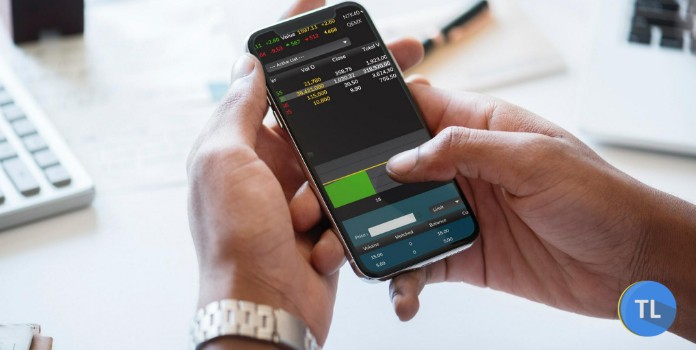Trading in the secondary markets has been revolutionized with technological innovations and online trading. Brokers and other intermediaries also operate online trading with the introduction of dematerialized shares.
Physical share certificates no longer exist, and the buying and selling of shares are through the depositories transferring shares online. There are various technological disruptions which have changed the way investors think and execute trades. Investment in shares, like any other investment, requires careful consideration and planning regarding investible surplus and fund allocation between different share categories.
If you don’t want to buy the whole share then there comes an option called fractional shares where you only buy fraction of share which will be less costly and very flexible. You can discover here about how to invest in fractional shares very easily.
The investment environment has largely improved since recent decades in India. Free Demat accounts can be opened by investors by accessing online aid through broking agencies and other intermediaries. This makes investing in stocks and EFT’s easier like you can easily buy bester Cannabis ETF just with a click.
Demat account of an investor is the electronic format of account held with designated depositories . Transfer of share investments is possible in a matter of seconds through Demat accounts. NSDL (National Securities Depository Ltd.) and CDSL (Central Depository Services Ltd.) is the depositories entitled to hold Demat shares of investors. Get more information here.
Dematerialization has streamlined the secondary capital markets with quick and easy trades. A fintech revolution is underway with connected investors and a dynamic trading environment.
Secondary markets get affected by global factors such as fiscal policies, monetary policies, economic environment of different countries, interest rates, inflation rates, macroeconomic factors etc.
Technology also has a major impact on the trading environment across nations. With investors diverting funds in international mutual funds and bonds, technological disruptions have emerged in the stock markets:
Table of Contents
1. Chatbot Technology and Virtual Assistants
Broking agencies and financial consultants have employed technology to create software that acts as virtual assistants. These are called ‘chat robots’ or ‘chatbots’ and are capable of interacting with live audiences to assist new entrants to portals, or to disseminate knowledge regarding investments based on investor preferences.
2. Mobile Apps
Mobile applications have become one of the simplest media of investor-broker relations. Today’s millennials and adults require quick updates and quicker action on their investment portfolio, based on real-time information in the markets. Mobile apps create a graphic user interface and act as a ground for interaction between investors and brokers. Grievances faced by investors can also be raised and resolved fast with mobile apps.
3. Customized Investing
Technology has brought customized investment solutions to the average investor. The software can be built to suit individual customer investible surplus, investment goals, required rates of return, risk appetites and liquidity preferences. A wealth of information is made available due to Internet technology for investors to make smarter choices regarding their investments.
4. Artificial Intelligence
Brokerage firms are utilizing the latest technologies such as AI (Artificial Intelligence) to make investment decisions in stocks. These programs are made to understand price trends and make sense of macroeconomic data along with individual company technical information to recommend buy and sell options to investors. AI has made a big breakthrough in the way investors buy and sell stocks.
5. Big Data and Predictive Analytics
Analytics is a science which analyses past trends and predicts future trends. Brokerage firms are increasingly using big data and analytics to analyze price movements of stocks and understand the reasons for the rise and fall in share prices. Predictive analytics is an advanced form of technology which aids in the future prediction of prices for investment decisions.
6. Data Mining Through Social Media
Applications like Facebook and Twitter are a mine of information to analyze investor behavior. Also, online trading forums can be used to mine data about investor risk appetites and investment goals. Data mining is a direct by-product of advanced technology penetration in the life of the average investor.
7. Instant Alerts
Investors and brokers receive instant updates regarding the markets and macroeconomic policies because of technological advancements. Increased mobile penetration has enabled investors from second and third Tier cities to be equally active participants in the capital markets, as first Tier city investors. This has also aided companies to expand sources for raising capital, and widened customer markets for brokerage firms.
8. Advanced Charting Tools
Technology has led to customer-focused disruption. Advanced charting tools aid the brokers to map individual investor goals against available shares for investing in the market. Different stocks are made available to both risk-averse and risk-taking investors.
Technological disruptions such as artificial intelligence, analytics and big data have indeed expanded investor options for stock investments. Brokers utilize tools such as charting tools, advanced stock analysis and supercomputers to analyse stock movements and recommend buy and sell options to clients.
Dematerialization has simplified the way investors buy and sell through online portals. In the twenty-first century, it is the age of smart and quick investing. Tools such as chatbots and virtual assistants have really made investments easy to decipher for naive and young investors. Investment has become more lucid due to technological advancement, for both brokers as well as investors.

